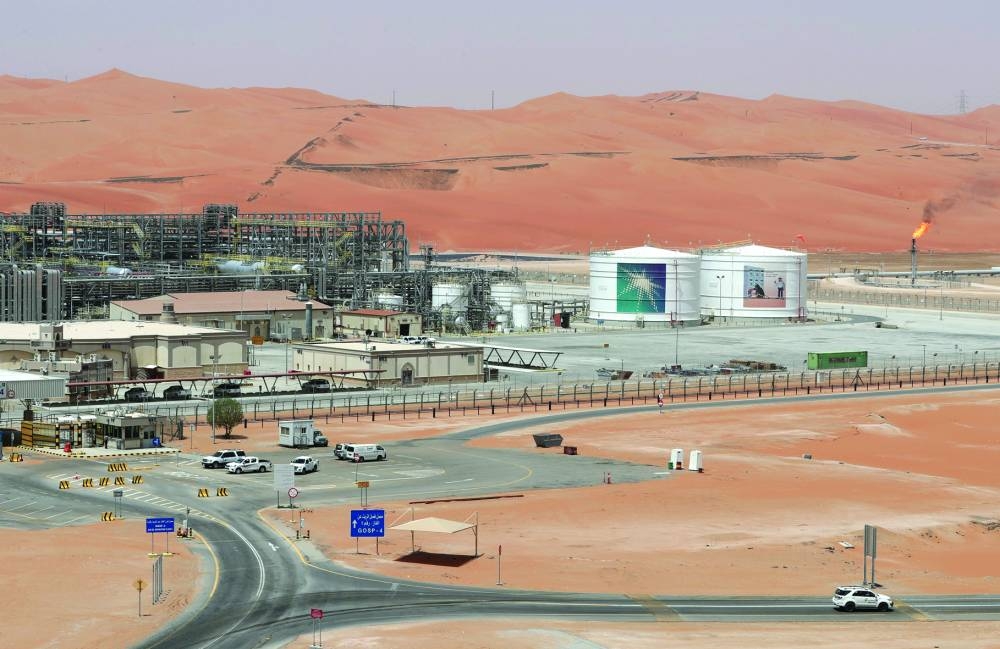Saudi Arabia’s sovereign debt rating was raised to A+ by Fitch Ratings, which cited the country’s efforts to diversify its economy away from a reliance on oil sales and “formidable” reserves.
The upgrade reflects the kingdom’s “strong fiscal and external balance sheets” and “assumes ongoing commitment to gradual progress with fiscal, economic and governance reforms,” Fitch said in a statement.
The upgrade comes just days after the country led a group of oil producers in cutting production, a move that caused crude prices to jump more than 6% to over $85 a barrel. Saudi Arabia recorded its first budget surplus in almost a decade in 2022, and is forecasting another surplus this year helped by high oil prices and rapid growth in the non-oil sector.
Fitch said it revised upward its estimate of the 2025 fiscal break-even oil price – the price oil needs to be at to balance the budget – to $76 a barrel from its previous forecast of $70 a barrel. It said the break-even price stood at $86 a barrel in 2022.
The kingdom had one of the highest reserves-to-debt coverage ratios among Fitch-rated sovereigns, though it forecast reserves to decline modestly to $445bn in 2023-24 from $459bn last year due to lower oil revenue.
At the same time the agency expected that Saudi Arabia’s sovereign wealth fund the Public Investment Fund, which is at the heart of ambitions to transform the kingdom’s economy, would “moderate” its external investments.
The PIF, as the wealth fund is known, is investing billions in so-called gigaprojects as part of Crown Prince Mohamed bin Salman’s Vision 2030 strategy to modernise the economy and make it less dependent on oil. It’s building new cities and entertainment districts to turn the country into the region’s business and tourism hub and thrust it into the ranks of the world’s top 15 largest economies.
Those investments, along with spending by the government in new projects, would help drive non-oil economic growth to around 5% this year, Fitch said. The rating agency sees non-oil growth slowing to around 4% in 2024 and 2025.
Fitch said rising public sector spending associated with Vision 2030 is a “medium-term risk” to Saudi Arabia’s balance sheet strengths, “particularly if this might not result in productive investments.”
“Oil dependence remains a rating weakness,” said the agency, with crude revenue expected to account for about 60% of total government income during 2023-2024, although that’s down from about compared with 90% a decade ago.
Last month’s agreement between Saudi Arabia and Iran bodes well for reducing regional risks, the agency said. Still, Iran’s progress with its nuclear programme and missile capabilities continue to be a concern and the kingdom’s rating is also constrained by “relatively weak governance scores,” Fitch said.
The upgrade by Fitch follows S&P Global Ratings, which lifted the kingdom’s credit score to A in March. Moody’s Investors Service raised it outlook on Saudi Arabia’s debt rating to positive the same month.
Business
Saudi Arabia upgraded by Fitch on ‘formidable’ finances
Saudi Arabia’s sovereign debt rating was raised to A+ by Fitch Ratings, which cited the country’s efforts to diversify its economy away from a reliance on oil sales and “formidable” reserves.

View of the production facility at Saudi Aramco’s Shaybah oilfield in the Empty Quarter (file). Saudi Arabia recorded its first budget surplus in almost a decade in 2022, and is forecasting another surplus this year helped by high oil prices and rapid growth in the non-oil sector.
